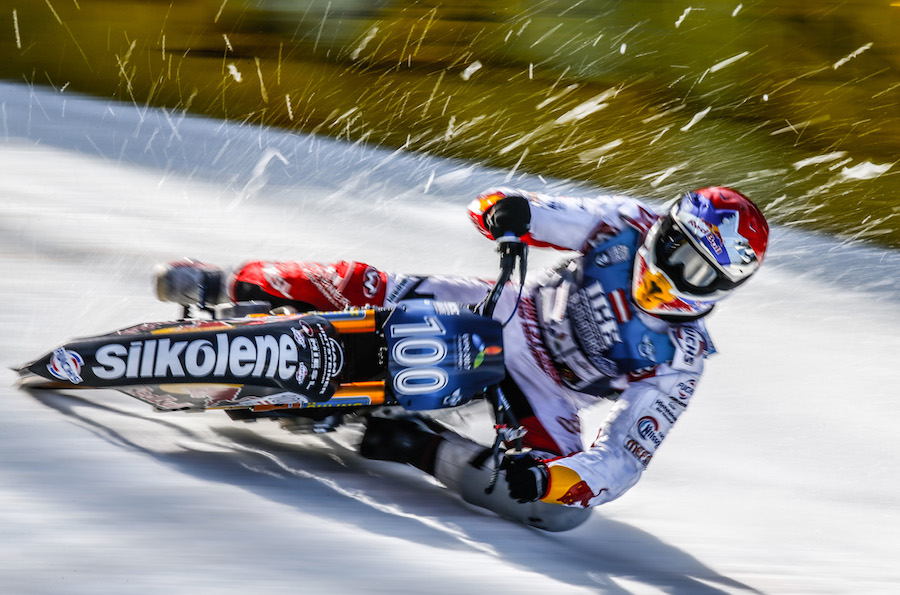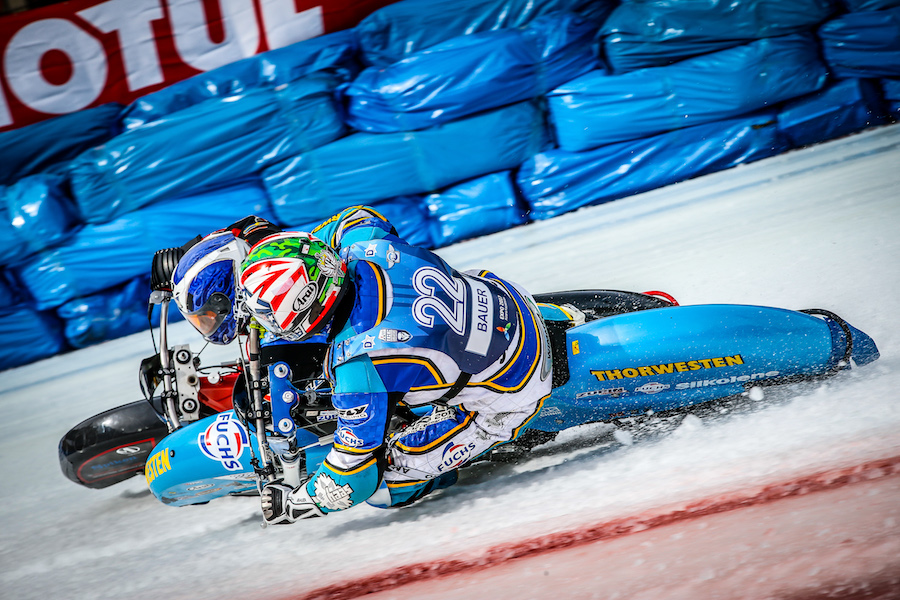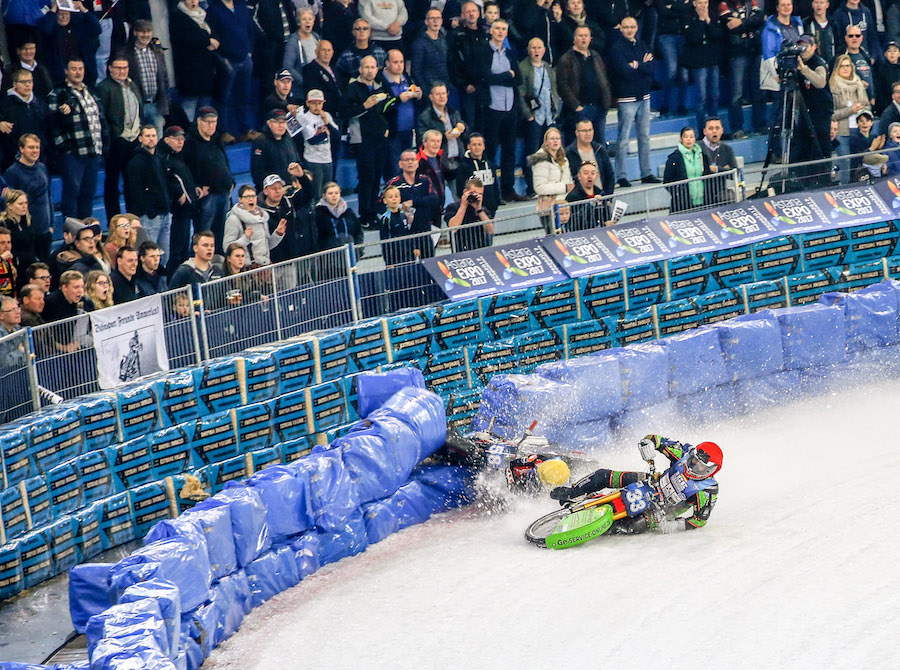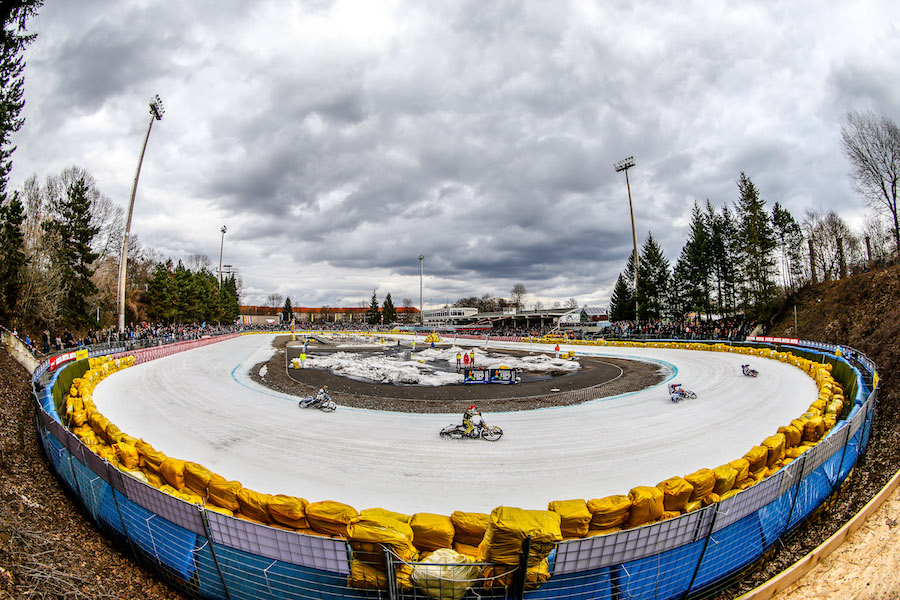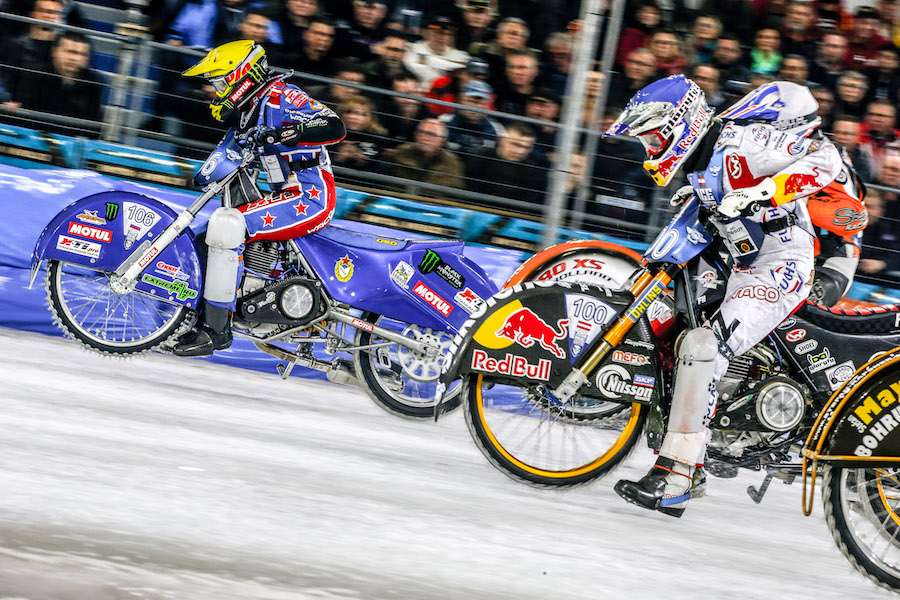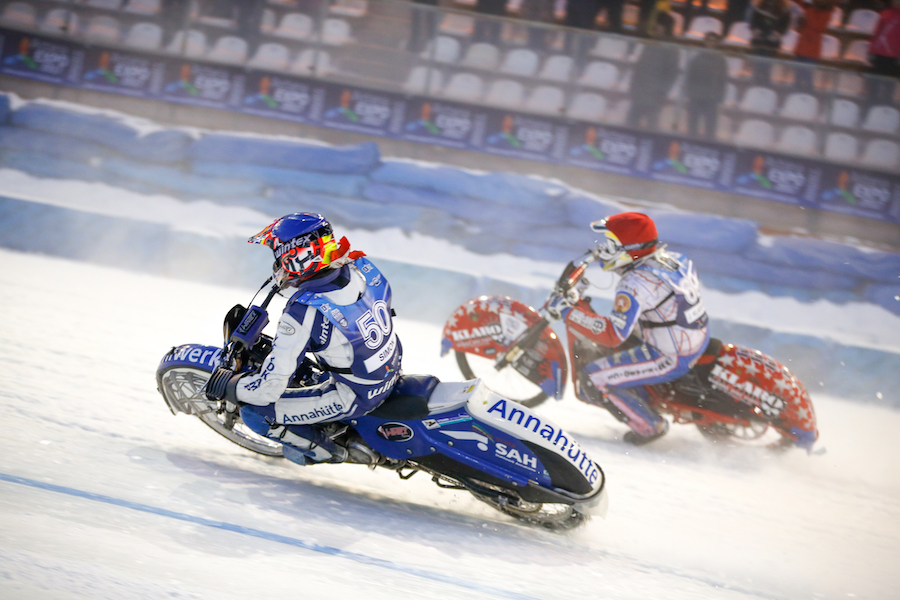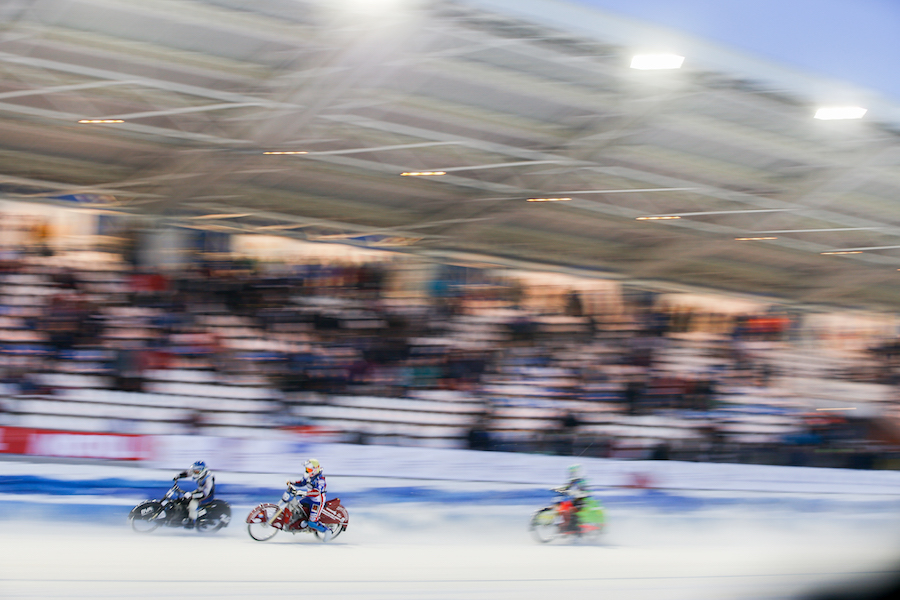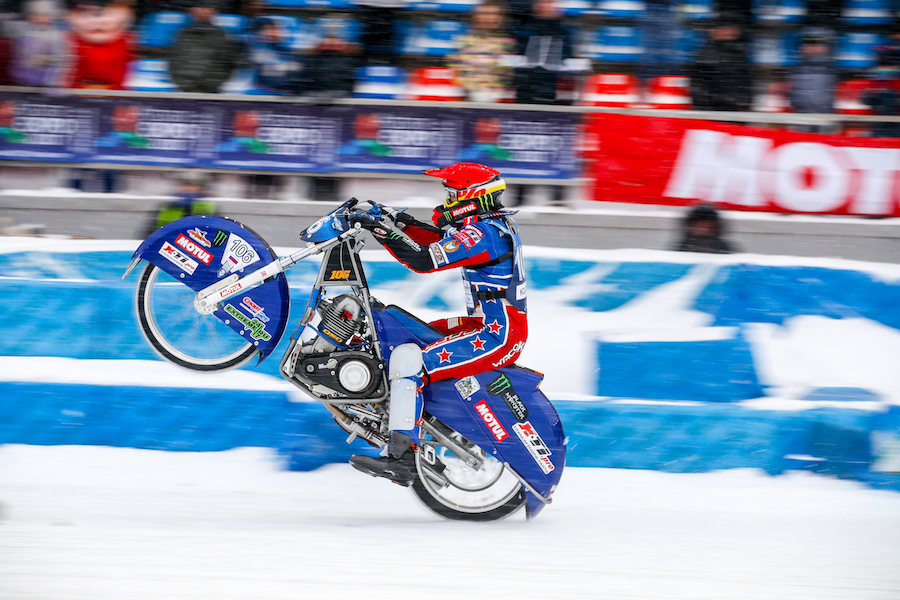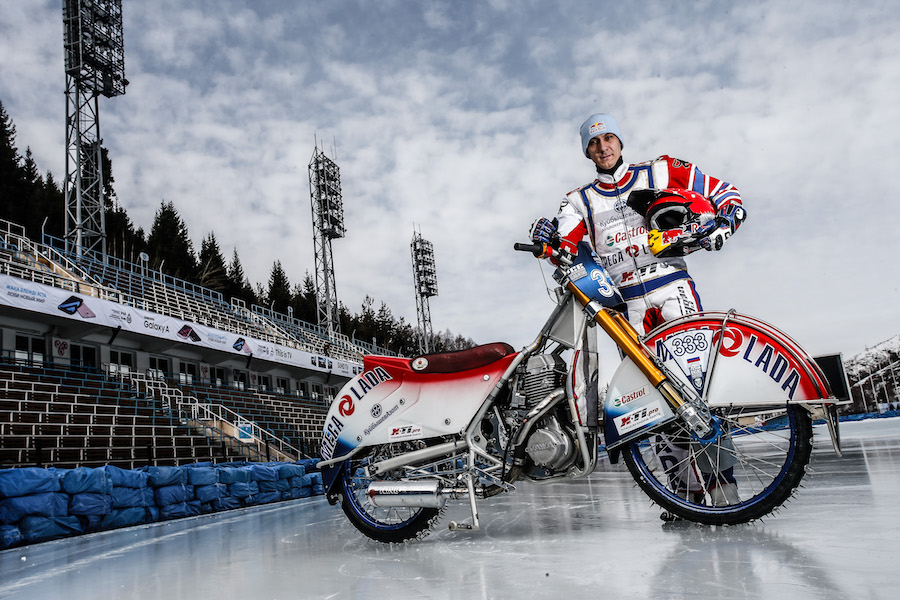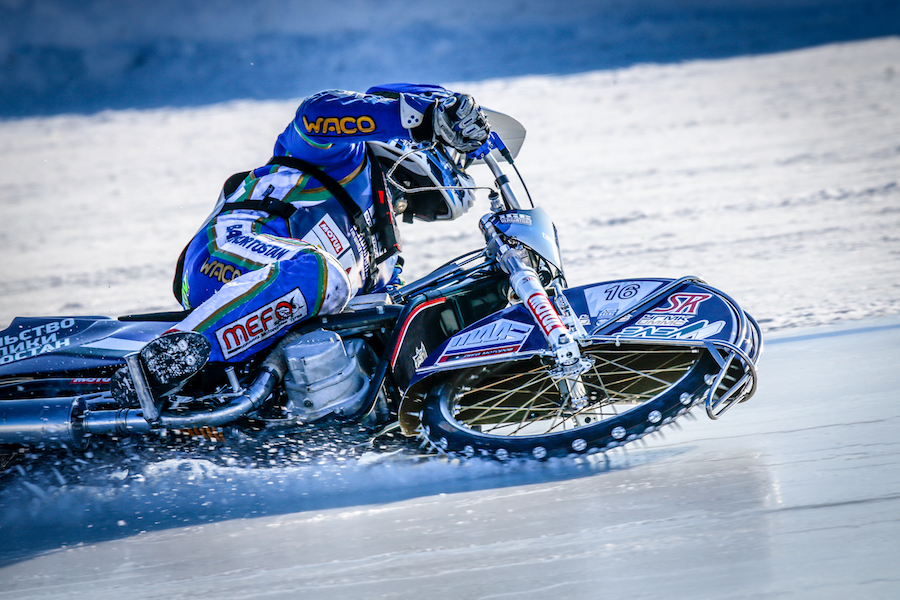When the weather forecast says it’s going to be a steady -30°C, a normal family stays at home and keeps busy with some board games next to the fireplace. Unless they live in Siberian Russia, that is.
There, when the conditions turn glacial, they go out to watch some sport: motorcycle racing. In this part of the world, and in these temperatures, it’s not uncommon to see 30,000 people attending races, sitting outside in an open stadium.
Ice Speedway Gladiators is huge.
Among other famous Russian specialties such as old Lada cars, babushkas, vodka, spies and polonium, Ice Speedway Gladiators stands out. Although the concept was born in Sweden long ago – the first record of motorcycle ice racing goes back to 1924 – it became the domain of Russians. This is mainly thanks to an icy climate perfect for accommodating the series, as well as endless open spaces and frozen lakes on which to practice.
Russia rules!
In the former Soviet Union, the ice speedway racing series started back in 1939, on the eve of WW2. It became hugely popular in Scandinavia and the USSR after the war, and local series featured several classes, including 125, 350, 500 and even sidecars.
A world series was instituted in 1963 with an FIM Cup, then the world championship began in earnest in 1966. Nowadays it consists of several rounds that take place in the former Soviet Union’s huge territories and neighbouring countries, with 14 top riders competing. This year two rounds took place in Russia, with one each in Finland, Sweden, Kazakhstan, Germany and the Netherlands. Cold countries only can apply to host a round, and the racing season goes from December to March.
Russia has won all but three championships since 1979, though a couple of countries have challenged its dominance. Some of the ice speedway greats have come from the Czech Republic (Milan Spinka and the Svab family), others from Austria, and even France has had some top riders, including Michel Masnada and Pierre Blocquel – both of whom were completely unknown in their home country despite the fact that the French Winter Olympics city of Grenoble has its own ice speedway track.
On the other side of the world, a similar racing series has existed for three decades in the US, though it’s not recognised by the FIM. The Ice Speedway Gladiators series is. All of which just shows that the real thing is in Russia, period.
Get a grip!
Ice speedway is the sheer essence of racing – flat out, no brakes. But lots of spikes; 120 on the 23-inch front tyre and between 160 and 200 at the back, depending on the track. This turns one of the slippiest surfaces into one of the grippiest. The spikes are 28mm long and every one is sharpened by hand, just like in the good old days of crafted cutlery.
Ice speedway is all about intensity. Rounds are extremely short with four-lap races that only last about a minute. Riders lap the oval track in 13-16 seconds, travelling at speeds above 100km/h in the corners and up to 140km/h on the short straights. The tracks all look the same and the bikes lean in only one direction – they always race anti-clockwise – so the tyres and nails are prepared accordingly.
To survive such a frantic series, riders adopt a race-or-die attitude; the series is called Ice Speedway Gladiators for good reason.
Each round takes place over two days and consists of at least 20 heats per day, then semi-finals and a final, so the show is also intense for the spectators. For the racers, due to the short format, the key is to lean first onto the first corner and get the holeshot, to secure their own line.
Unlike summer speedway where the bikes drift sideways on a gravel surface, ice speedway bikes lean over at angles even more extreme than MotoGP, sometimes more than 65 degrees. Nevermind getting a knee or elbow down – the handlebar can even hit the ice while cornering.
Cool runnings
The word ‘gladiators’ has a bit of a timeless feel, and this definitely applies to the bikes. The 500cc four-stroke two-valve singles do not look very sophisticated, and in this case appearances are not deceiving. They haven’t really been developed for decades, except for the state-of-the-art front fork, which plays a major part in the overall performance. That compensates for the rigid frame and the lack of rear suspension.
The engines are all made by Czech manufacturer Jawa and are long-stroke singles with a high compression ratio. They are estimated to deliver just over 40kW and use a two-speed gearbox. Carburation is limited to a 34mm port. There are obviously no electronics and if racers are happy to do power wheelies to add excitement to the show, they can also suffer from highsides. KTM tried to develop a four-valve 450cc single, but the power delivery was not felt to be as satisfying as the Jawa, since two-valve engines provide more torque and smoother throttle response, better for adjusting speed in corners. Italian company GM also made an engine, but Jawa remains the favourite.
WORDS PHILIPPE GUILLAUME
PHOTOGRAPHY DAVID REYGONDEAU
